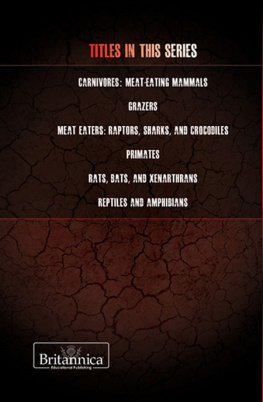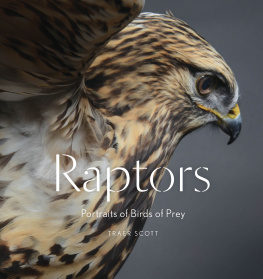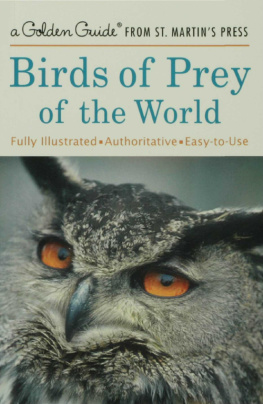MEAT EATERS
RAPTORS, SHARKS, AND CROCODILES
THE BRITANNICA GUIDE TO PREDATORS AND PREY
MEAT EATERS
RAPTORS, SHARKS, AND CROCODILES
EDITED BY JOHN P. RAFFERTY, ASSOCIATE EDITOR, EARTH AND LIFE SCIENCES

Published in 2011 by Britannica Educational Publishing
(a trademark of Encyclopdia Britannica, Inc.)
in association with Rosen Educational Services, LLC
29 East 21st Street, New York, NY 10010.
Copyright 2011 Encyclopdia Britannica, Inc. Britannica, Encyclopdia Britannica, and the Thistle logo are registered trademarks of Encyclopdia Britannica, Inc. All rights reserved.
Rosen Educational Services materials copyright 2011 Rosen Educational Services, LLC.
All rights reserved.
Distributed exclusively by Rosen Educational Services.
For a listing of additional Britannica Educational Publishing titles, call toll free (800) 237-9932.
First Edition
Britannica Educational Publishing
Michael I. Levy: Executive Editor
J.E. Luebering: Senior Manager
Marilyn L. Barton: Senior Coordinator, Production Control
Steven Bosco: Director, Editorial Technologies
Lisa S. Braucher: Senior Producer and Data Editor
Yvette Charboneau: Senior Copy Editor
Kathy Nakamura: Manager, Media Acquisition
John P. Rafferty: Associate Editor, Earth and Life Sciences
Rosen Educational Services
Jeanne Nagle: Senior Editor
Nelson S: Art Director
Cindy Reiman: Photography Manager
Matthew Cauli: Designer, Cover Design
Introduction by Greg Roza
Library of Congress Cataloging-in-Publication Data
Meat eaters: raptors, sharks, and crocodiles/edited by: John P. Rafferty.
p. cm.(The Britannica guide to predators and prey)
Includes bibliographical references and index.
In association with Britannica Educational Publishing, Rosen Educational Services.
ISBN 978-1-61530-404-2 (eBook)
1. Birds of preyJuvenile literature. 2. SharksJuvenile literature. 3. CrocodilesJuvenile literature. I. Rafferty, John P.
QL677.78.M43 2011
598.9dc22
2010037064
On the cover: A great white shark surfaces long enough to show why it is considered one of the most fearsome predators of the sea. shutterstock.com
On page : Peregrine falcon (Falco peregrinus). www.istockphoto.com/Jonathan Parry
On pages : Tiger shark gills. Jeff Rotman/The Image Bank/Getty Images
CONTENTS
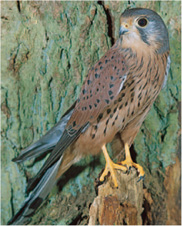
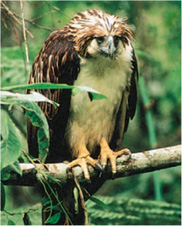
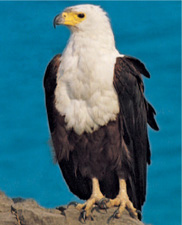
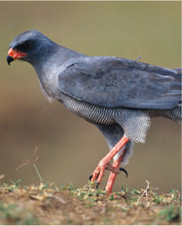
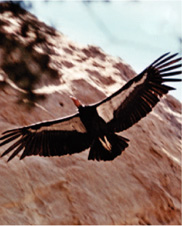
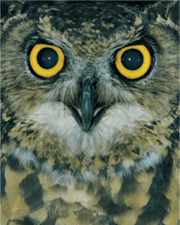
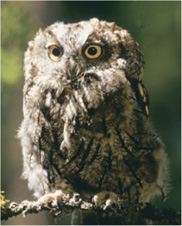
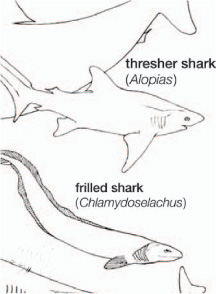
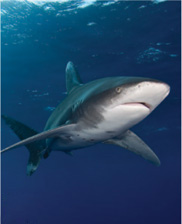
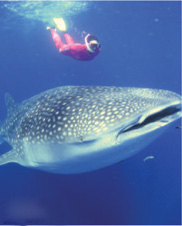
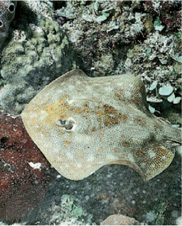
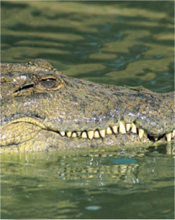
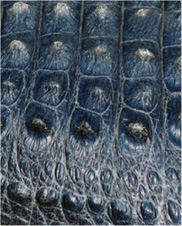
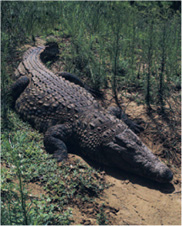
INTRODUCTION
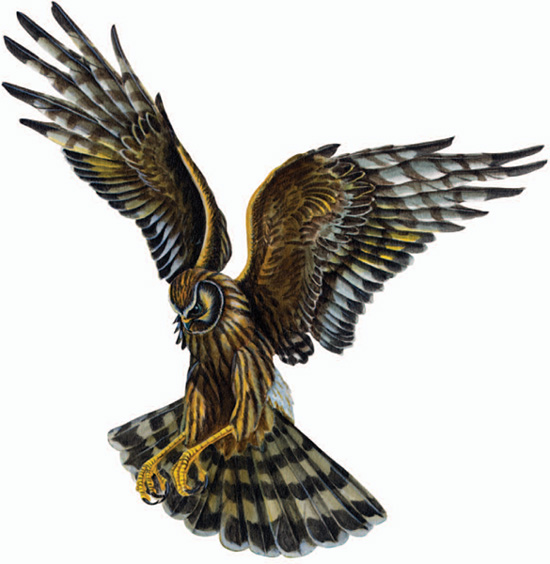
T here is a vast array of meat eaters in the animal kingdom. Present in nearly every habitat across the globe, these creatures utilize several behaviours and take advantage of physical traits that make them superior hunters. Some use speed, others use stealth. All of them eat other animals to survive. This books focuses on a select group of meat eaters that rule the air and dominate in the water: raptors, sharks, and crocodiles.
Raptors are a group of flying hunters. They are called birds of prey because they spend much of their time searching for and hunting other animals. The largest group of raptors is the falconiforms. This group is made up of many graceful yet deadly birds, including falcons, eagles, and hawks. Vultures, condors, and ospreys also are included.
The life cycle of a falconiform consists of four stages. During the fledging period, the downy baby bird quickly grows into an adult. This stage may last several weeks for smaller birds, or several months for larger species. The next stage is the postfledging period, during which the bird remains close to the nest while the birds parents bring food to the nest. During the third stage, the juvenile period, the young bird is completely independent, but it is unable to breed. It is at this stage that the youngster perfects its hunting skills. The final stage is that of a breeding adult. Most adults of breeding age form pairs and raise young together. The length of each life stage depends on the size of the bird. In general, the largest falconiforms mature more slowly.
Found in habitats worldwide, from deserts to the tundra, falconiforms share several traits that make them excellent hunters, including powerful feet with sharp talons for catching prey, and a sharp, curved beak for tearing flesh. Birds of prey also have physical traits that are specialized to their particular mode of hunting, the type of prey they seek, and the particular habitat in which they live. For example, some raptors, such as vultures and eagles, have broad, powerful wings that allow them to soar high above their prey for extended periods of time. Although these broad-winged groups require a good deal of energy to take off, they are able to stay aloft by hovering, circling over rising pockets of warm air called thermal updrafts. Others have lighter, more streamlined wings for quick flight and rapid dives. Many smaller raptors have long, pointed wings that are perfect for high-speed dives. Falcons in particular are excellent at attacking other birds in flight.
All falconiforms can walk or hop on the ground, and most are adept fliers. The secretary bird, however, is the only falconiform whose primary method of locomotion is walking. This bird has long legs and short toes that are perfect for quick movements on the ground.
Next page


